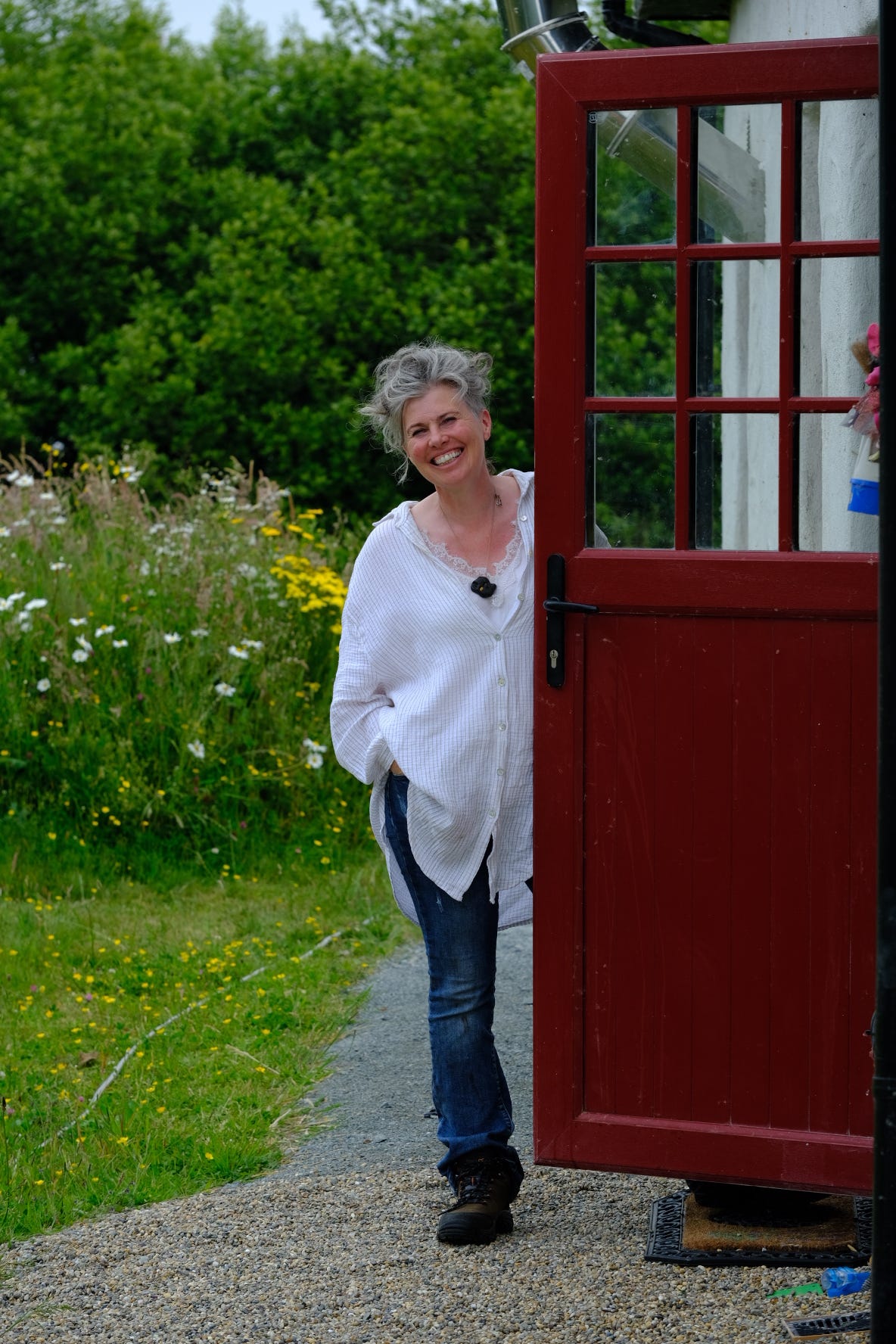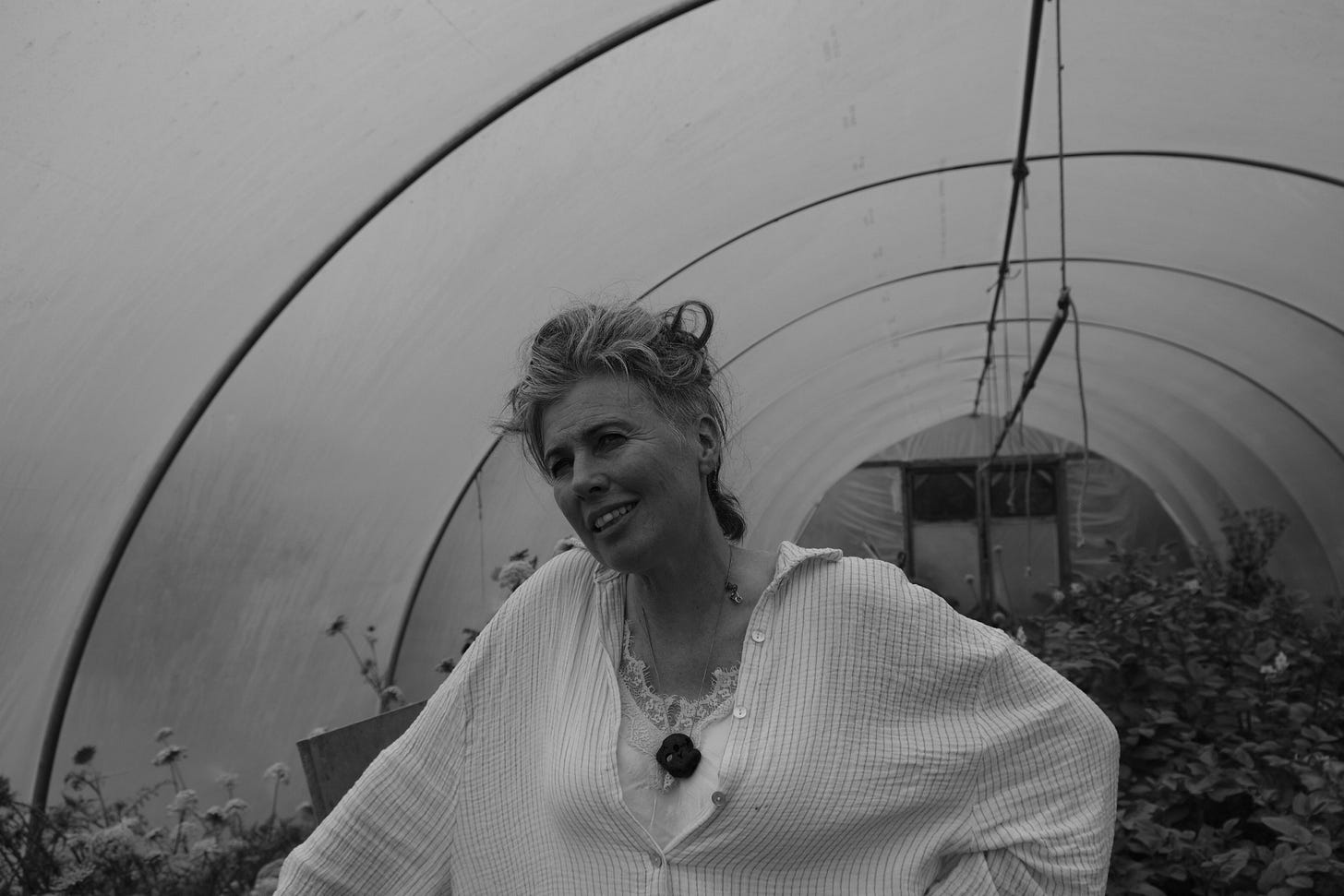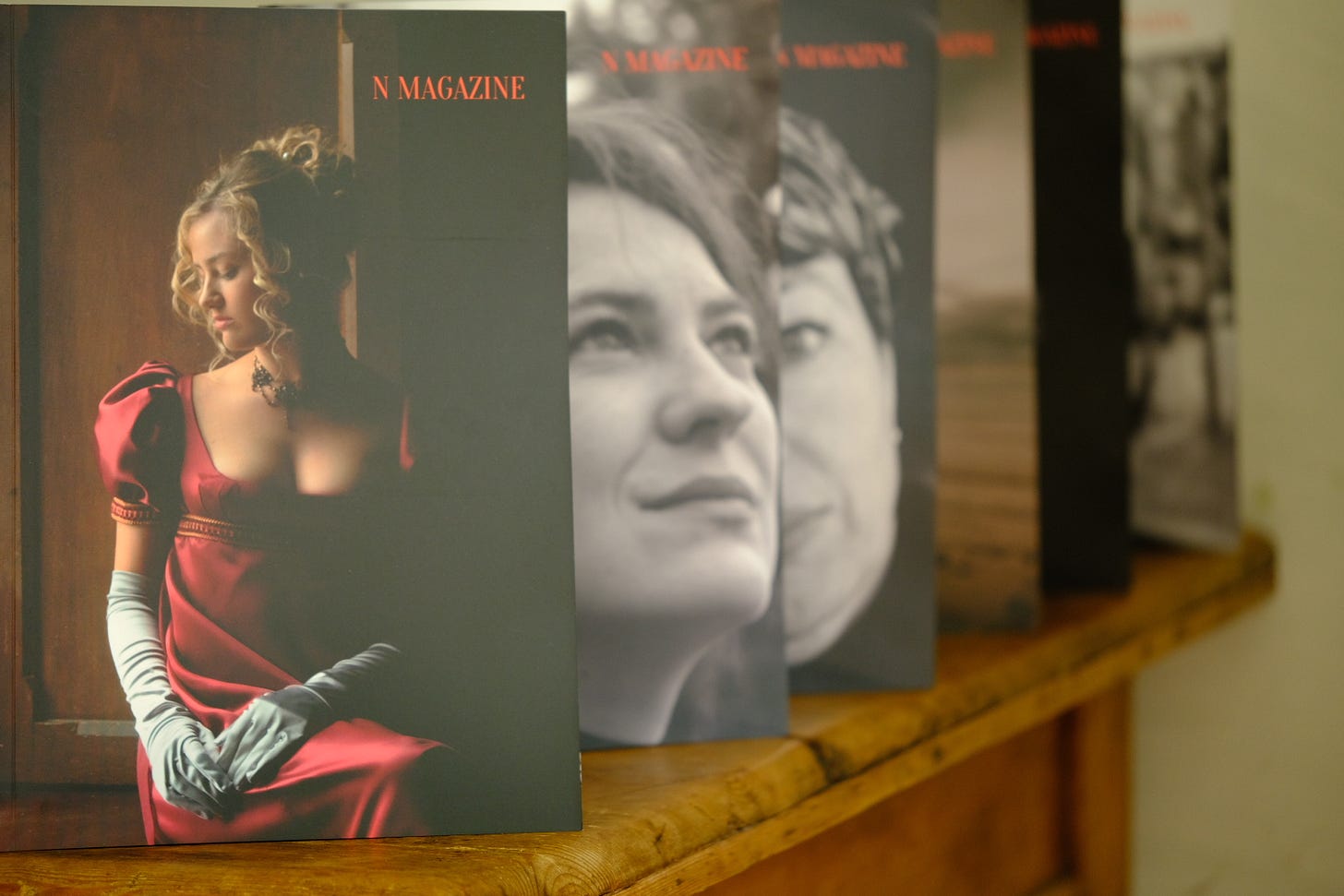Thank you for joining the mailing list of Ireland’s new art magazine.
Every Wednesday and Saturday for the rest of 2023, you’ll meet a new and extraordinary Irish artist in your inbox.
This article was first published in N Magazine No.7, which is available at the National Gallery, various lifestyle and design stores around the planet and of course on our website.
Enjoy!
Aoife x
You may have heard of Mary Reynolds.
She was the wild child of Irish garden design, the youngest female contestant to ever win a gold medal at the Chelsea Flower Show.
In the last twenty years, Mary has written books, given lectures and designed gardens all over the world. If that wasn’t enough, she founded the environmental movement We are The Ark which explains the little handmade sign that marks the entrance to her home.
A master of creating beautiful spaces, Mary lives in a cosy white cottage with red doors and windows; her kitchen is all spices and onions, cats and fennel plants wander in and out of the double doors.
Her home is surrounded by polytunnels, no dig gardens, ponds, flowers; follow Mary down a little honey scented path and you’ll find the beehive with a little seat so you can tell the bees the latest news.
Mary’s garden is a riot of wild flowers and dragonflies, a far cry from the trimmed, controlled gardens of the past. Here, pest control is simply asking the buggy-wuggies to desist after devouring one cabbage plant. And you know what? The universe is always listening; why do we presume the carrot fly is not?
Now, as you continue in conversation with Mary, a progressively more dream-like feeling emerges.
In human terms, Mary spends her days giving lectures and designing wild gardens all around the world. But given the breadth and depth of our conversation, I think that hardly accounts for five per cent of her time.
We talked about the importance of being barefoot, the Wexford strawberry cult, bleached seabeds, the antihistamine qualities of plantains.
We talked about her dream of flying as a crow over a lush and untouched Ireland, which prompted her conversion to wild garden design.
We talked about her beehive, which came to her after a stranger had a dream telling him to gift her the hive.
Her polytunnels are insanely warm and abundant with early tomatoes, flowers and food. Here in the heat, I ask her about the cailleach stone around her neck. The intrinsic importance of our native language as a connection to our native trees, ogham of course was a language of trees, unlike the sterilised Irish taught to unwilling children for 100 years, true Irish is deeply rooted in our surroundings, holding the keys to understanding our botany, weather, food and emotions.
True nature is where true beauty is.
Like her namesake, Mary has the energy of a mother; sacrificial, wise, clear-eyed, caring.
Spend that much time with the earth and you begin to take on her qualities.
She sees gardens like children, asking us for direction, as their direction is completely dependent upon our actions, impositions upon them. There is no sense in our culture of allowing our gardens’, or our children's, truly unique spirit to emerge. .
‘Like any child, we generally put the child in pretty clothes, tell them to smile when the neighbours come around. Whenever a garden tries to grow naturally, we punish it.’
We equate tidiness with care. There is very little life in a tidy garden.
For the last few years, Mary has been steadily writing herself out of a job with a series of books about conscious garden design; the crowning blow came when she looked out her window one winter morning to see a fox and two hares fleeing from landscapers in a neighbouring garden.
Realising the habitat destruction she had unwittingly caused herself many times, Mary began to design wild gardens and in this new adventure, she realised the parallels between the experience of being a woman and the experience of the earth. She discovered a kindred tiredness of only being accepted for being beautiful or useful or productive.
‘The unattainable beauty standards of formal gardens make you feel lesser but when you’re in a natural space you feel accepted for who you are.
I think that we need to release these fecking chains of bondage we have on the land. If you want to save the planet, which is a ridiculous statement to even have to say, you have to start with your own patch of ground.
What would Mary recommend to regenerate the biome of barren soil?
‘First of all, you do nothing.’
My inner control freak panicked.
‘Leave it?’
‘Yes’
‘What seeds should you plant?’
What the earth sends up is the swift and inconvenient answer.
She relents and adds
‘Well, if you can find an old tree near you, take a little bit of leaf litter at the base of the tree and add it to a rain barrel of rainwater, along with molasses. Leave the mixture with an aerator for oxygen for 24-48 hours. Pour the resulting mixture on the ground and that will restore the old microbiome.’
Now this advice is contrary to the farming by regulation craze but does anyone believe in legislation any more? We move through the motions to avoid free thought.
Speaking of such things, after quite a lot of thought, Mary founded ‘We Are The Ark’, a movement centred around acts of restorative kindness to the Earth.
The philosophy of the Ark asks people to give half the land under their care back to nature and to grow their own food in the other half, if they can, or to offer the land to friends and families who need land to grow food themselves.
Should the no dig gardens yield an abundance, people are encouraged to share their harvest with friends and family who love food. Creating communities around growing food and supporting local, organic regenerative farmers is an essential and radical act.
Mary’s gardening (and life) philosophy is centred around kindness.
And that kindness is returned by the earth.
By creating beautiful spaces in which nature is allowed to lead, the plants can reveal their secrets. There's an old adage that all the plants you need for your own healing will come up within 20 feet of your door; Mary frequently finds nettles outside her house, which she brews into iron rich teas.
Just what the soul ordered.
In these tender times of transition, earth wisdom is a welcome whisper. As children leave home and parents leave bodies, there is deep solace and homecoming in nature.
Mary’s favourite environment has recently switched from woodlands to the sea.
In the waves can be found the sanity and coolness we deeply crave in the midst of modern shenanigans.
Get thee to the ocean, wild child.
You can find Mary, if she wants to be found, at www.marymary.ie and www.wearetheark.org and on Instagram wildmarymary . Photography & article by Aoife Long.
This article was first published in N Magazine No.7 which is available in print here.
If you would like to treat yourself or a loved one to Ireland’s new art magazine every month, we would invite you to consider a 3, 6 or 12 month print magazine subscription.
For readers in Ireland, print subscriptions begin at just €45 for 3 months and €66 for 3 months for US readers.









Thank you very much for this article, it is really very interesting what Mary Reynolds says and how she has developed her work.